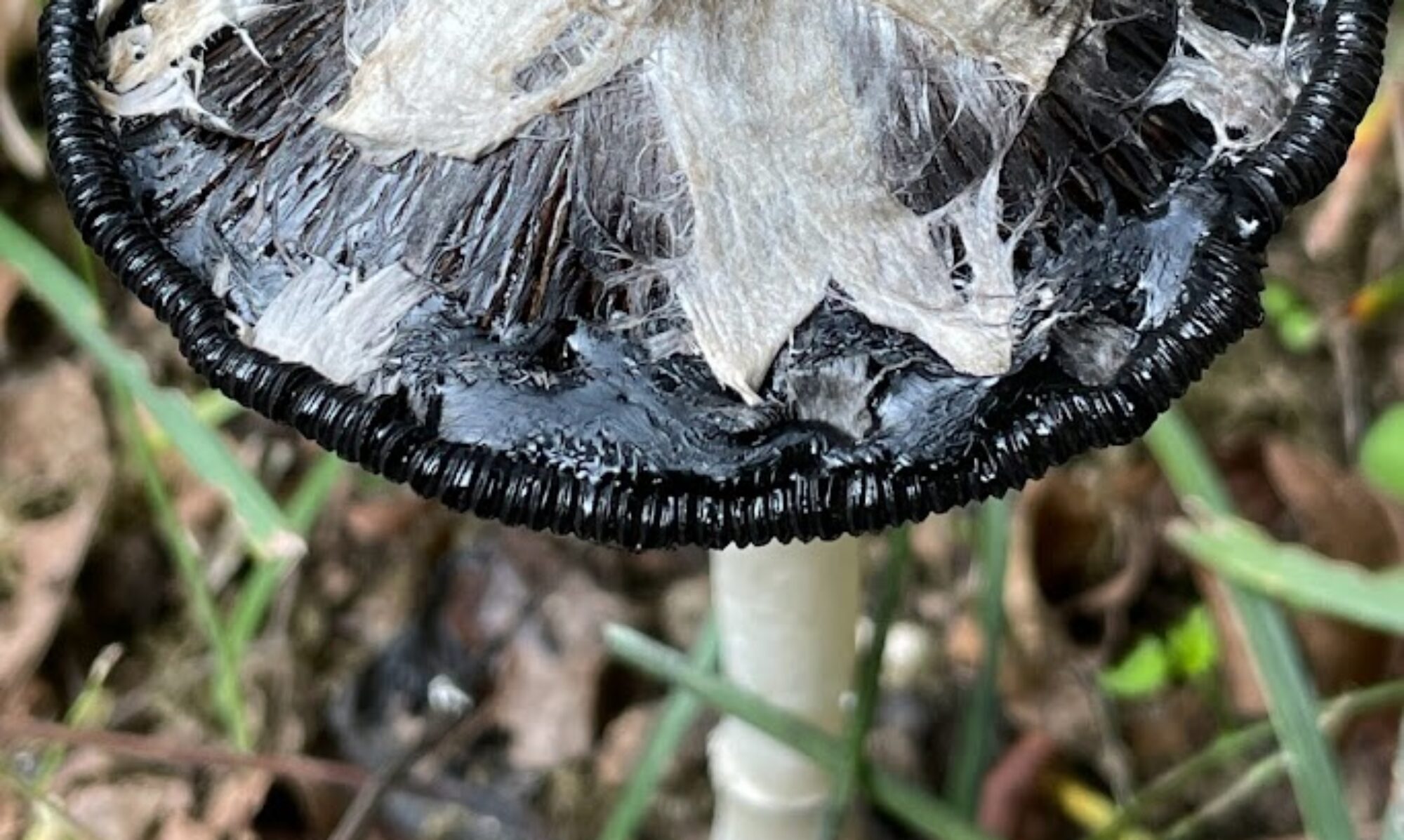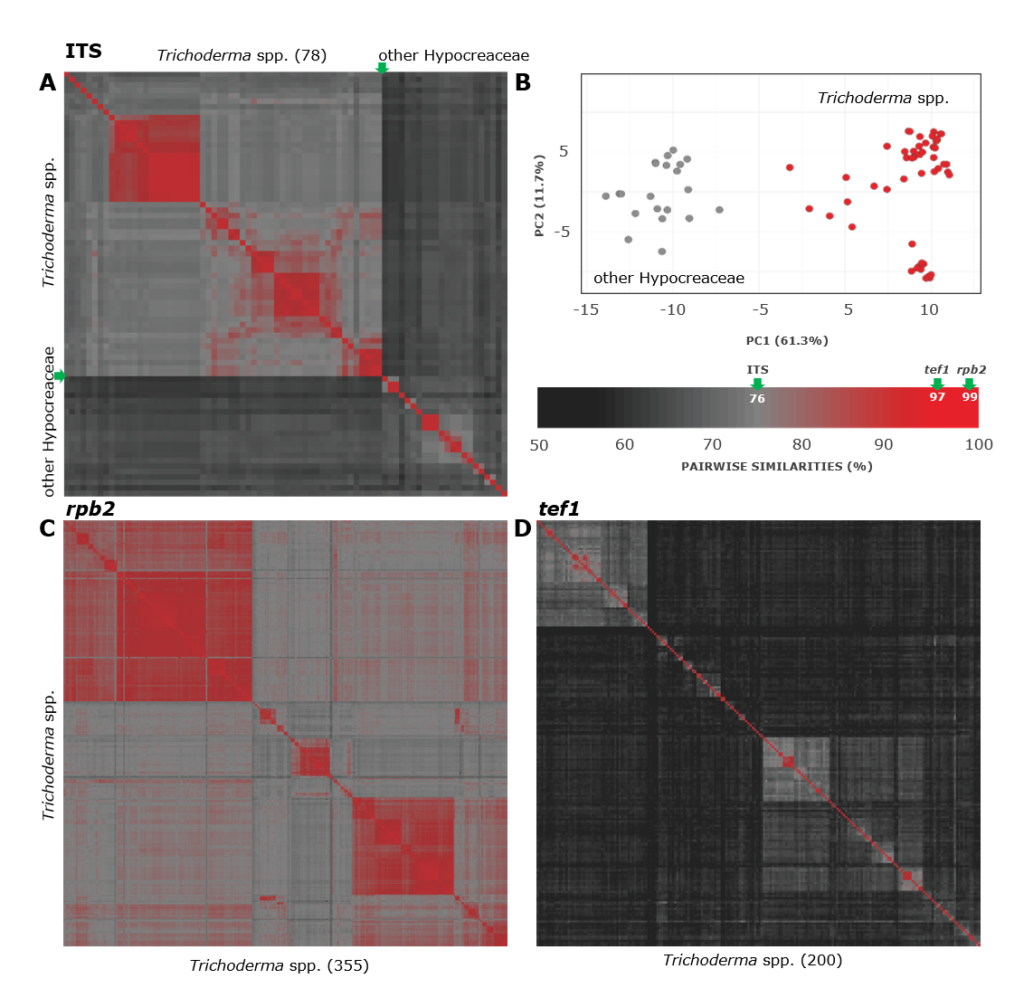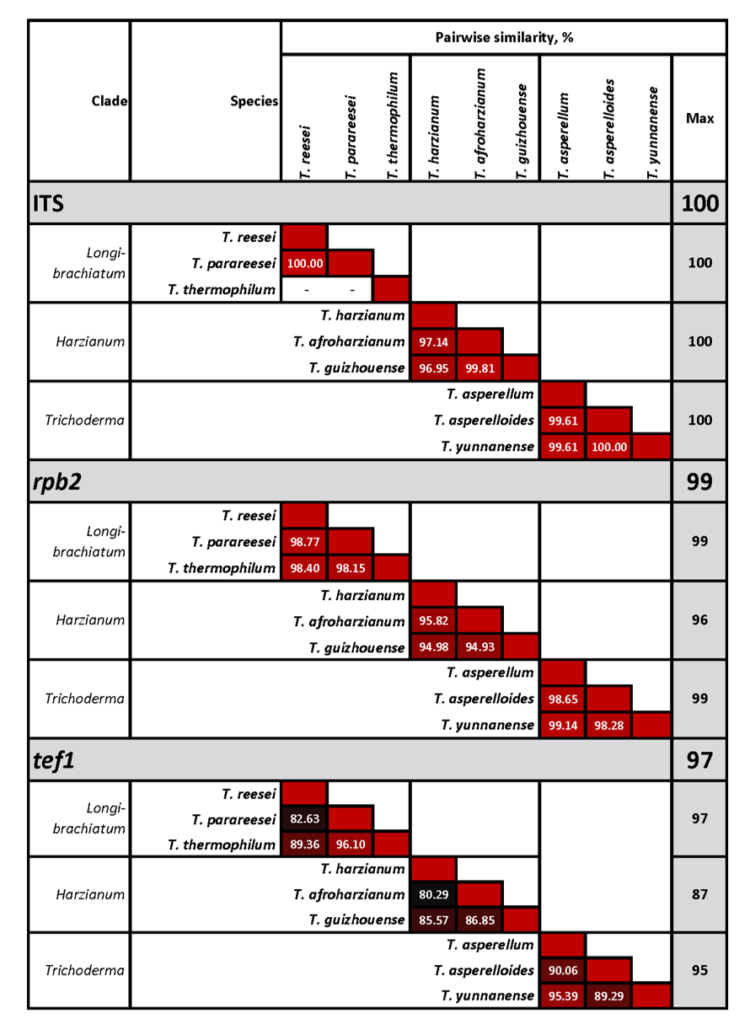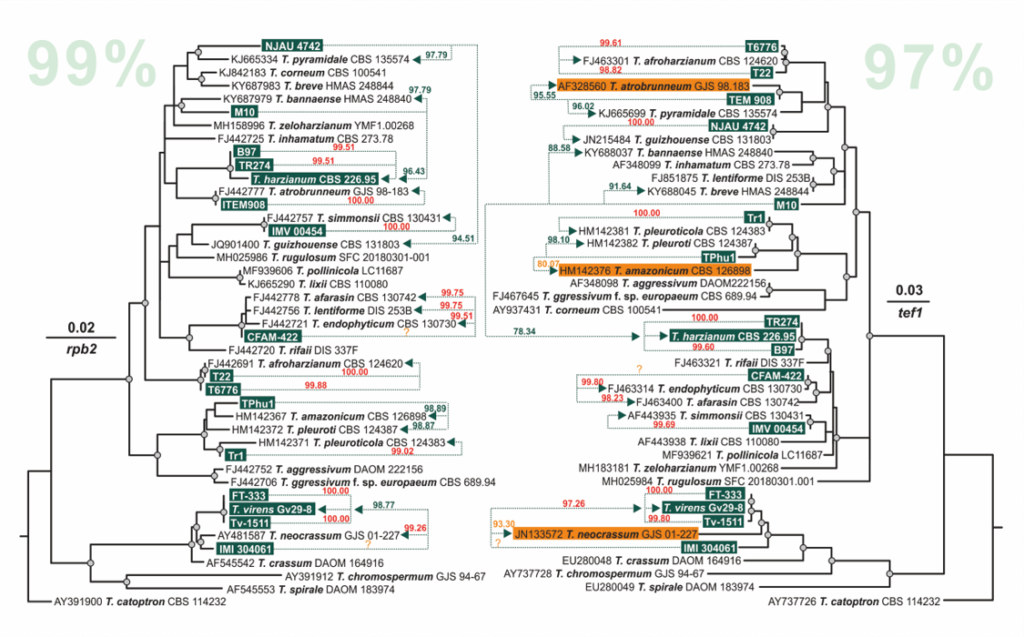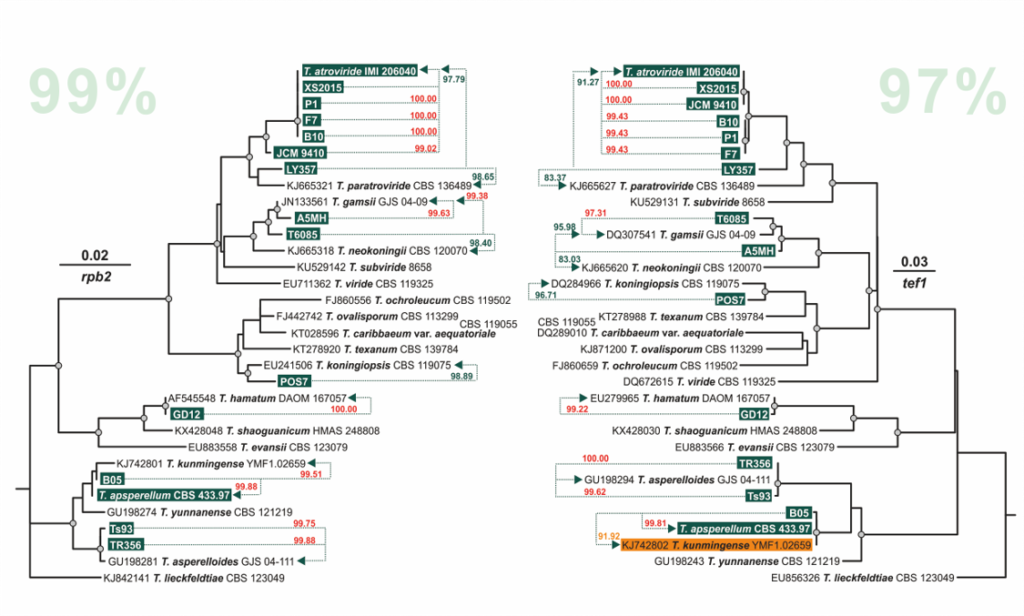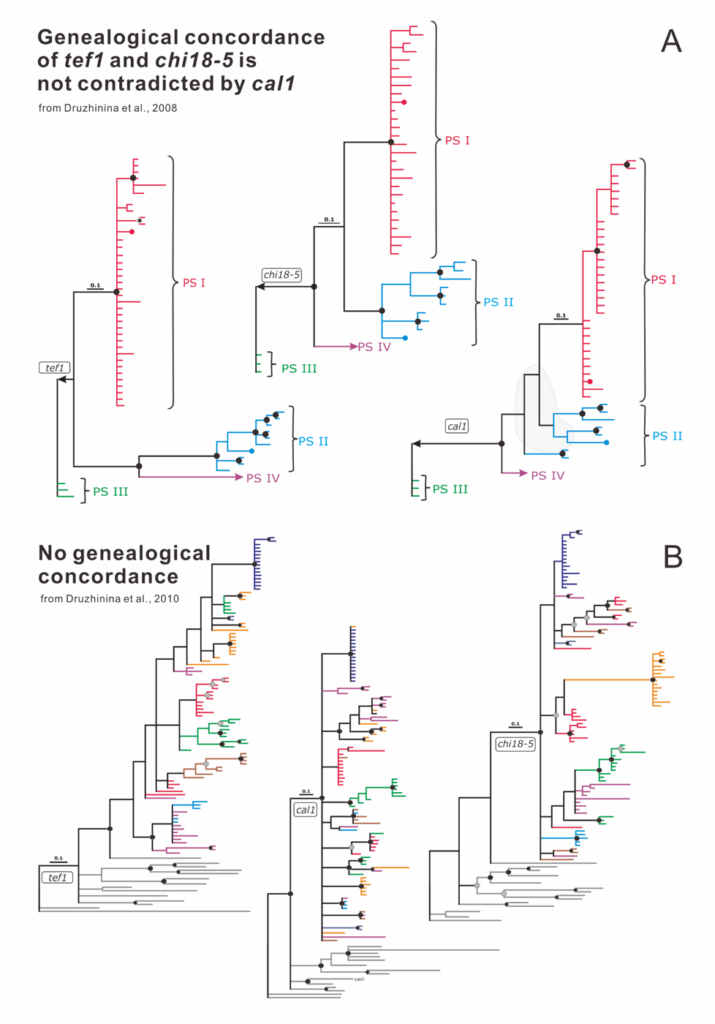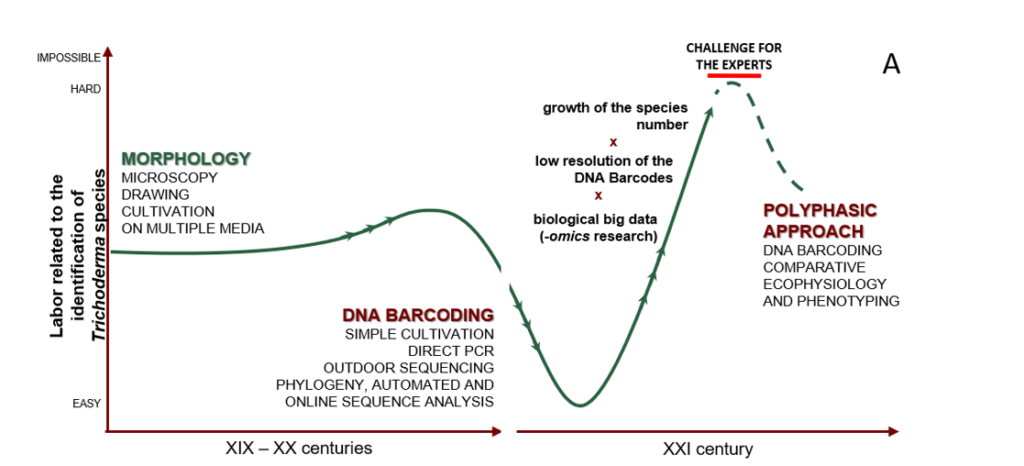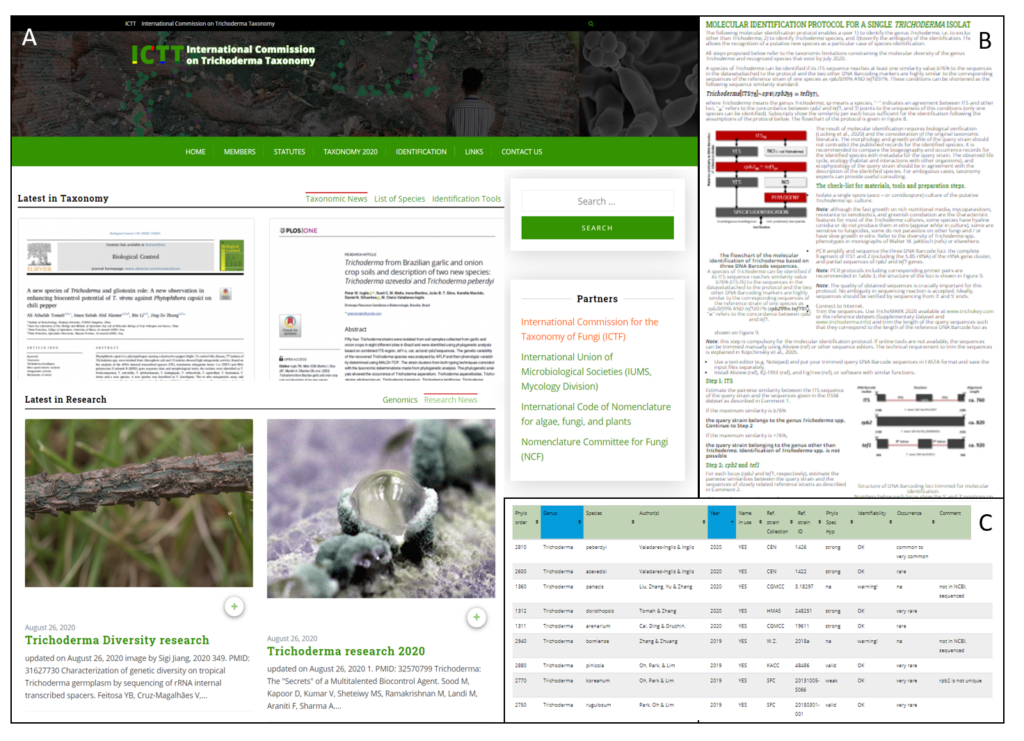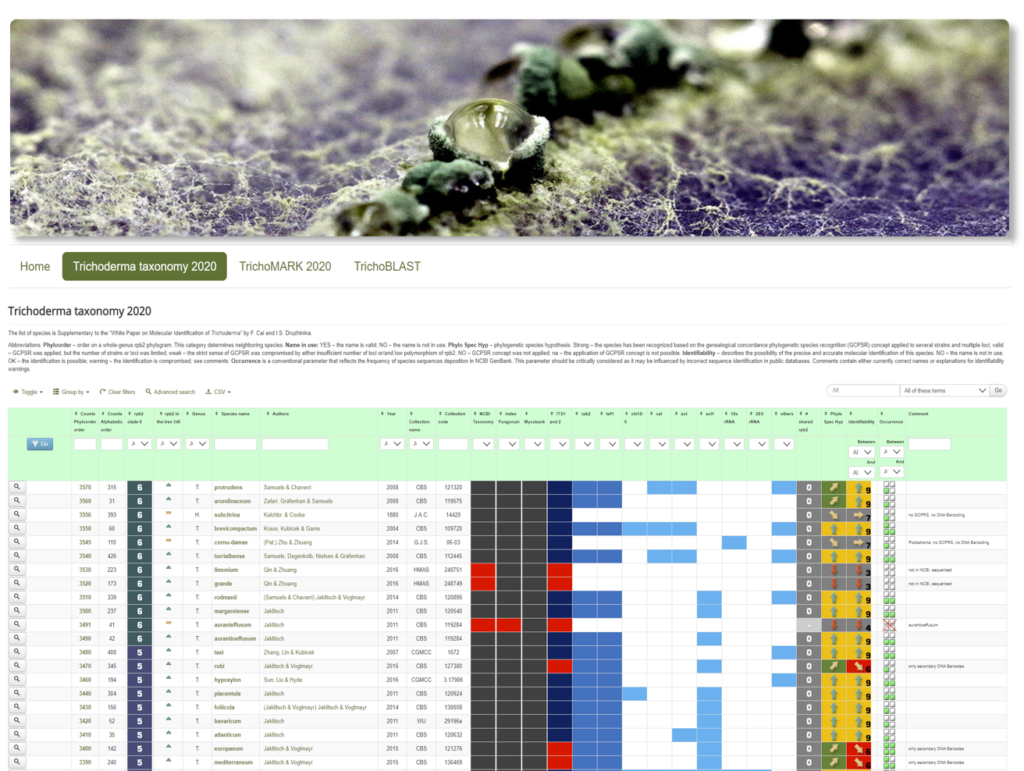Cai, F., Druzhinina, I.S. In honor of John Bissett: authoritative guidelines on molecular identification of Trichoderma. Fungal Diversity 107, 1–69 (2021). https://doi.org/10.1007/s13225-020-00464-4
Modern taxonomy has developed towards the establishment of global authoritative lists of species that assume the standardized principles of species recognition, at least in a given taxonomic group. However, in fungi, species delimitation is frequently subjective because it depends on the choice of a species concept and the criteria selected by a taxonomist. Contrary to it, identification of fungal species is expected to be accurate and precise because it should predict the properties that are required for applications or that are relevant in pathology. The industrial and plant-beneficial fungi from the genus Trichoderma (Hypocreales) offer a suitable model to address this collision between species delimitation and species identification. A few decades ago, Trichoderma diversity was limited to a few dozen species. The introduction of molecular evolutionary methods resulted in the exponential expansion of Trichoderma taxonomy, with up to 50 new species recognized per year. Here, we have reviewed the genus-wide taxonomy of Trichoderma and compiled a complete inventory of all Trichoderma species and DNA barcoding material deposited in public databases (the inventory is available at the website of the International Subcommission on Taxonomy of Trichoderma www.trichoderma.info). Among the 375 species with valid names as of July 2020, 361 (96%) have been cultivated in vitro and DNA barcoded. Thus, we have developed a protocol for molecular identification of Trichoderma that requires analysis of the three DNA barcodes (ITS, tef1, and rpb2), and it is supported by online tools that are available on www.trichokey.info. We then used all the whole-genome sequenced (WGS) Trichoderma strains that are available in public databases to provide versatile practical examples of molecular identification, reveal shortcomings, and discuss possible ambiguities. Based on the Trichoderma example, this study shows why the identification of a fungal species is an intricate and laborious task that requires a background in mycology, molecular biological skills, training in molecular evolutionary analysis, and knowledge of taxonomic literature. We provide an in-depth discussion of species concepts that are applied in Trichoderma taxonomy, and conclude that these fungi are particularly suitable for the implementation of a polyphasic approach that was first introduced in Trichoderma taxonomy by John Bissett (1948–2020), whose work inspired the current study. We also propose a regulatory and unifying role of international commissions on the taxonomy of particular fungal groups. An important outcome of this work is the demonstration of an urgent need for cooperation between Trichoderma researchers to get prepared to the efficient use of the upcoming wave of Trichoderma genomic data.
